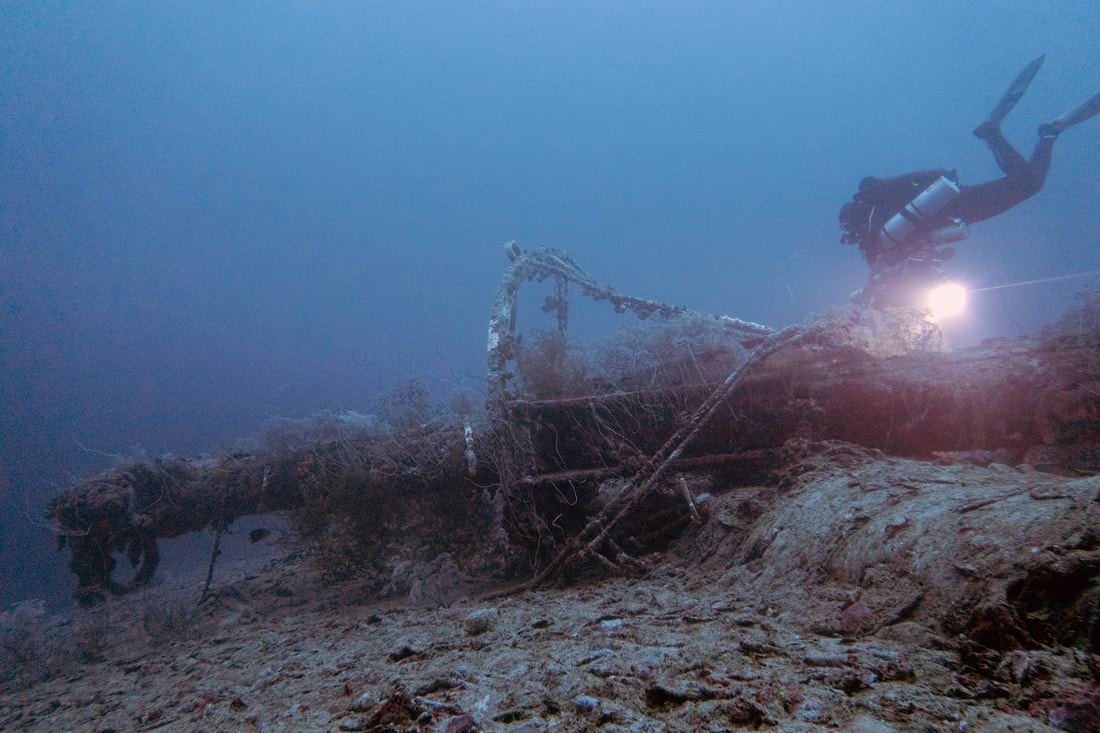
The full article can be accessed here.
This study came out of an exciting research expedition and collaboration among Voss Lab researchers and members of the Biodiversidad Marina de Yucatán (BDMY) working group including Dr. Nuno Simões a co-author on the manuscript. We participated on a 2019 dive expedition on the liveaboard M/V Caribbean Kraken to reefs on the Campeche Bank in the southern Gulf of Mexico. During the expedition, we dove and sampled at both Alacranes reef, the largest bank reef in the Gulf of Mexico and a Mexican National Park and at another site to the northeast, Bajos del Norte, a more poorly characterized but biodiverse reef. Diving onboard the active liveaboard with a combination of researchers and tourists had its benefits and challenges. Lexie and her co-author/dive buddy/fellow Voss Lab graduate student, Ryan Eckert only had access to air tanks and therefore were depth-limited. They were also on a strict timeline to collect the corals as the dive itinerary only gave them two days at each reef. Nevertheless, they were successful in collecting all their samples from their target depth zones and were excited to have the opportunity to share their research firsthand with the tourists onboard the trip!
Montastraea cavernosa corals were collected across multiple depth zones ranging from the shallow to the upper-mesophotic at 10, 15, 25, and 35 m across Alacranes and Bajos del Norte reefs. Back in the lab, Lexie worked with fellow co-author and Voss Lab graduate student Ashley Carreiro to extract the DNA from these samples. This DNA was used in two different molecular approaches, first the coral host was genotyped using a 2bRAD sequencing approach that generated over 10,000 SNP loci. Then DNA from the coral’s algal symbionts were amplified using Symbiodiniaceae specific primers for the ITS2 region, a common genetic marker for assessing algal symbiont community structure.
From this dual genetic dataset we identified depth-dependent genetic structuring of both the M. cavernosa coral host and the algal symbiont communities, identifying the strongest level of differentiation between the shallow (10,15 and 25 m) and upper-mesophotic (35 m) depth zones. Similarly to many of our previous studies, the magnitude of depth-dependent genetic structuring for both the coral and symbionts varied between location and was much stronger at Alacranes than at Bajos del Norte. This is an important result for management of these reef systems as the refugia potential of Alacranes' mesophotic coral populations may be limited, therefore, care should be taken to effectively protect and manage not only the shallow but also the deeper populations at this reef. It is currently unknown if there is a more significant genetic break deeper than what we could sample at Bajos del Norte, but this population's location near the entrance to the Gulf of Mexico and its relatively high levels of vertical connectivity suggest that it may be an important connectivity stepping stone for this regional metapopulation. Stay tuned for Lexie’s next paper to find out!
This work was funded by awards from NOAA Office of Ocean Exploration and Research to the Cooperative Institute for Ocean Exploration, Research and Technology (CIOERT) at FAU Harbor Branch, an award from the NOAA National Center for Coastal Ocean Science through the Connectivity of Coral Ecosystems in the Northwest Gulf of Mexico project as well as student funding from the NSF GRFP, Women Divers Hall of Fame, and Florida Sea Grant Scholars program. We are grateful to all participants of the research expedition including members of the BDMY research group, the crew of the M/V Caribbean Kraken, and the University of Texas at Austin’s Genome Sequencing and Analysis Facility.










 RSS Feed
RSS Feed
